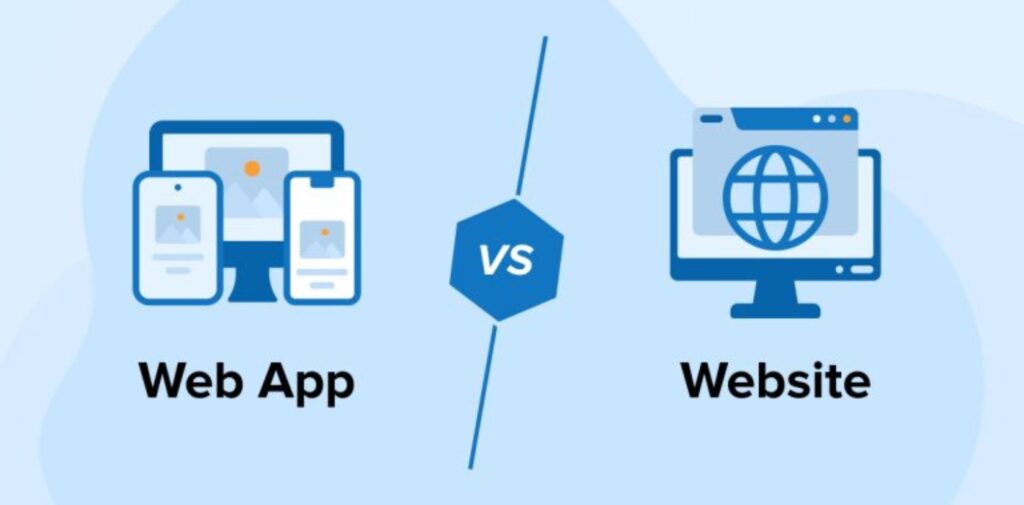When we use a smartphone or a computer, we often come across apps, websites, and other online tools. These tools are designed to help us in many ways, like playing games, learning new things, or shopping online. But have you ever wondered what the difference is between a Native App and a Web App? Let’s break it down in a simple way, so even a 9-year-old can understand it.

What is a Native App?
A Native App is a type of application that is specifically built for a particular type of device. For example, there are apps made just for Android phones (like WhatsApp or Instagram) and others that work only on iPhones (like Apple Music or Safari). These apps are downloaded and installed directly on your phone or tablet.
Once you install a Native App, it becomes a part of your device. This means you don’t need an internet connection to use it (unless the app requires one for specific features). A great thing about Native Apps is that they can work very smoothly with the phone’s features, like the camera, GPS, or touch screen.
So, if you want to use WhatsApp to chat with friends, you need to download and install it on your phone. It will then be ready for you to use, even if you’re not connected to the internet all the time.
What is a Web App?
A Web App is different from a Native App because it doesn’t need to be downloaded to your device. Instead, you open it using a web browser, like Chrome, Safari, or Firefox. Web Apps work by connecting to the internet. So, when you open a Web App, it loads on your screen directly from the internet.
One example of a Web App is Google Docs. You don’t need to download anything to use Google Docs; you simply go to the website (docs.google.com), log in, and you can start creating documents. Since Web Apps depend on the internet, you must have a connection to use them.
Web Apps are often more flexible because they can be accessed from any device that has a browser and an internet connection. Whether you are using a phone, tablet, or computer, you can open the Web App and use it. However, because Web Apps rely on the internet, they might not work well if you don’t have a good connection.

Key Differences Between Native Apps and Web Apps
- Installation: Native Apps need to be installed on your device before you can use them. You go to the app store (Google Play Store or Apple App Store) and download the app. On the other hand, Web Apps do not need installation. You can simply visit a website in your browser, and the app will work directly from there.
- Performance: Native Apps usually perform better than Web Apps. This is because they are designed for specific devices and can use the full power of that device, like the camera, microphone, and GPS. Since Web Apps are based on the internet and rely on the browser, they might not be as fast or smooth, especially when the internet connection is slow.
- Offline Use: Native Apps work even if you don’t have an internet connection. You can use them anywhere, whether you are on a plane or in a place with no Wi-Fi. Web Apps, however, need the internet to work. Without a good connection, you won’t be able to use them.
- Device Compatibility: Native Apps are built for specific devices. An app designed for an Android phone won’t work on an iPhone, and vice versa. But Web Apps can be used on any device that has a browser, making them more flexible. You can use them on phones, tablets, and computers without worrying about whether the device is Android or iOS.
- Updates: Native Apps need to be updated regularly. When a new version of the app is available, you have to download the update from the app store. With Web Apps, updates are made directly on the website, so you always get the latest version every time you visit. You don’t have to worry about downloading anything.
- Storage Space: Since Native Apps are installed on your device, they take up storage space. The more apps you install, the less space you have for photos, music, or videos. Web Apps don’t take up space on your device because they run from the internet. This means you can save more space for other things.

Which One Should You Choose?
Now that we know the differences between Native Apps and Web Apps, which one should you use? It really depends on what you want to do.
If you want a fast, smooth experience, and you use the app often, a Native App is the best choice. Native Apps are perfect for games, messaging apps, or anything that requires high performance, like photo editing or video streaming. For example, if you enjoy playing games like PUBG or watching YouTube videos, Native Apps are better.
But if you don’t want to worry about installing apps and prefer using something that works on any device, Web Apps are great for tasks like checking your email, creating documents, or browsing websites. Web Apps are perfect for activities you don’t need to use all the time, like checking news updates or working on school projects from any device.
Conclusion
Both Native Apps and Web Apps have their own advantages. Native Apps offer better performance, offline use, and integration with device features, but they take up space and need to be downloaded. On the other hand, Web Apps are more flexible, can be accessed from any device, and don’t take up storage space, but they need an internet connection to work.
Choosing between Native Apps and Web Apps depends on your needs. If you need something fast and reliable, go for a Native App. But if you prefer the convenience of not downloading anything and using it on any device, Web Apps are a great option. So, next time you use an app or a website, you’ll know whether it’s a Native App or a Web App, and what makes it special!




